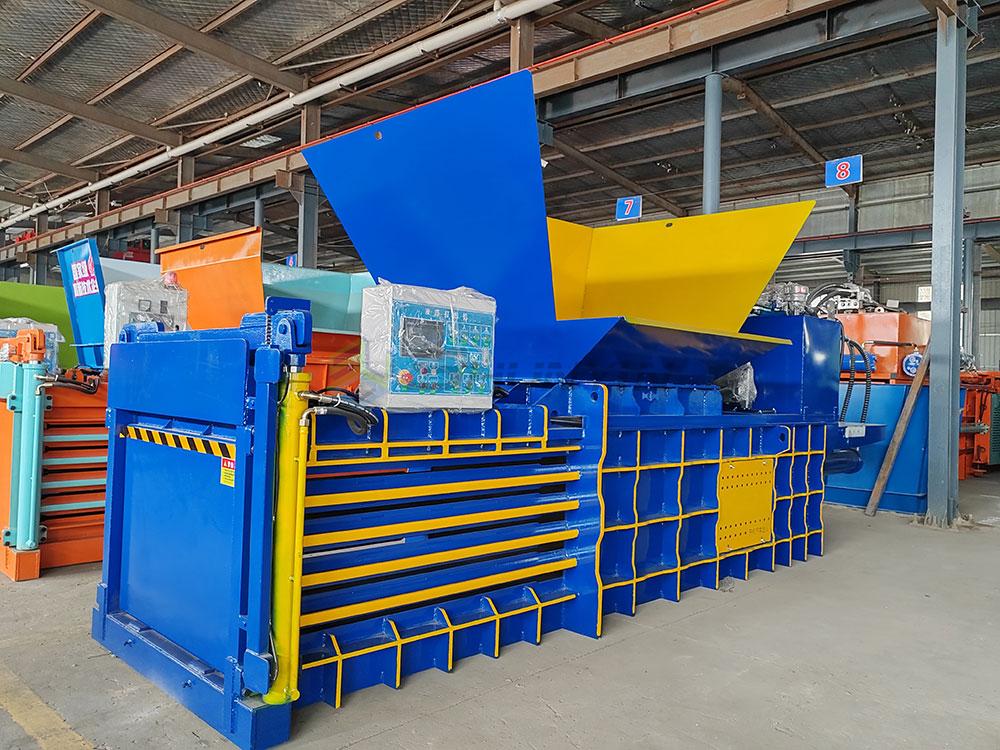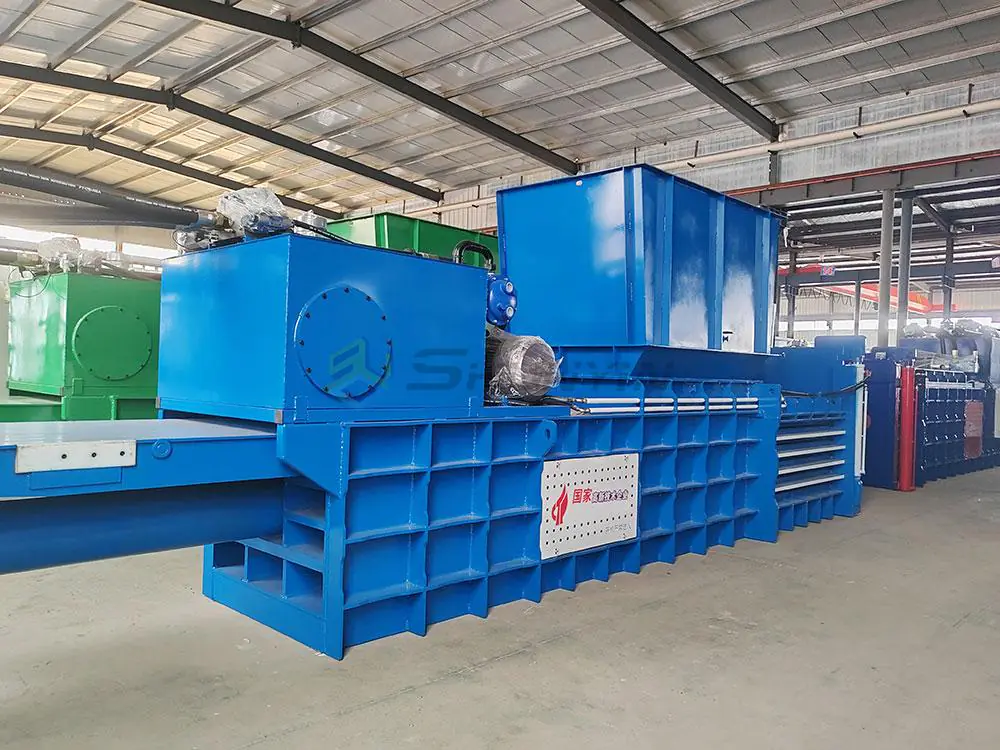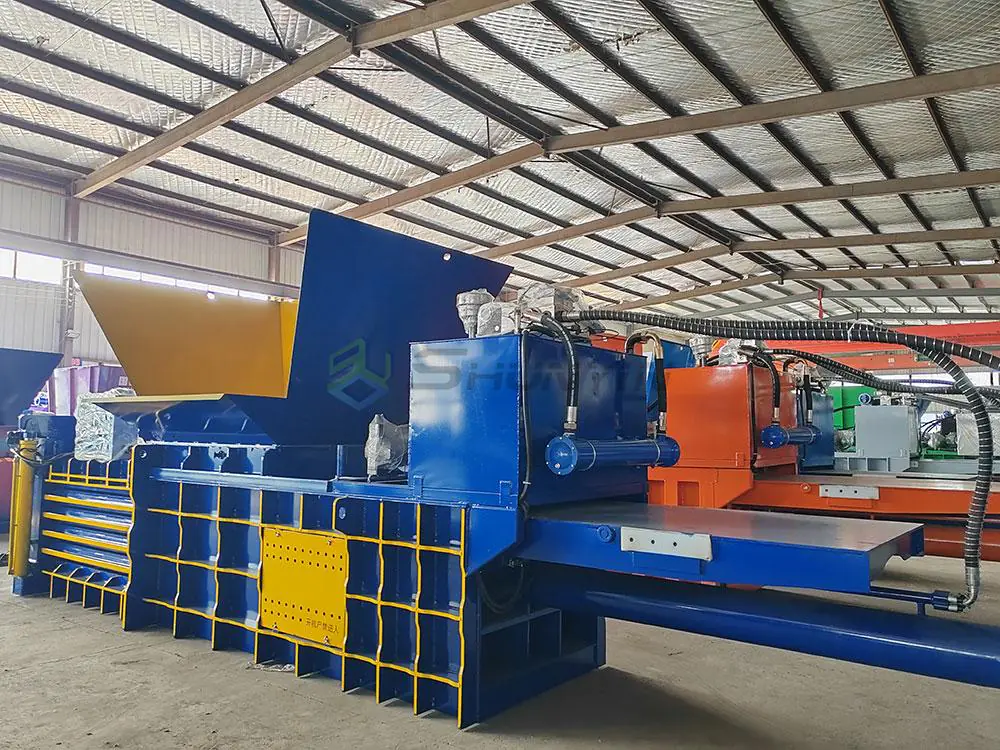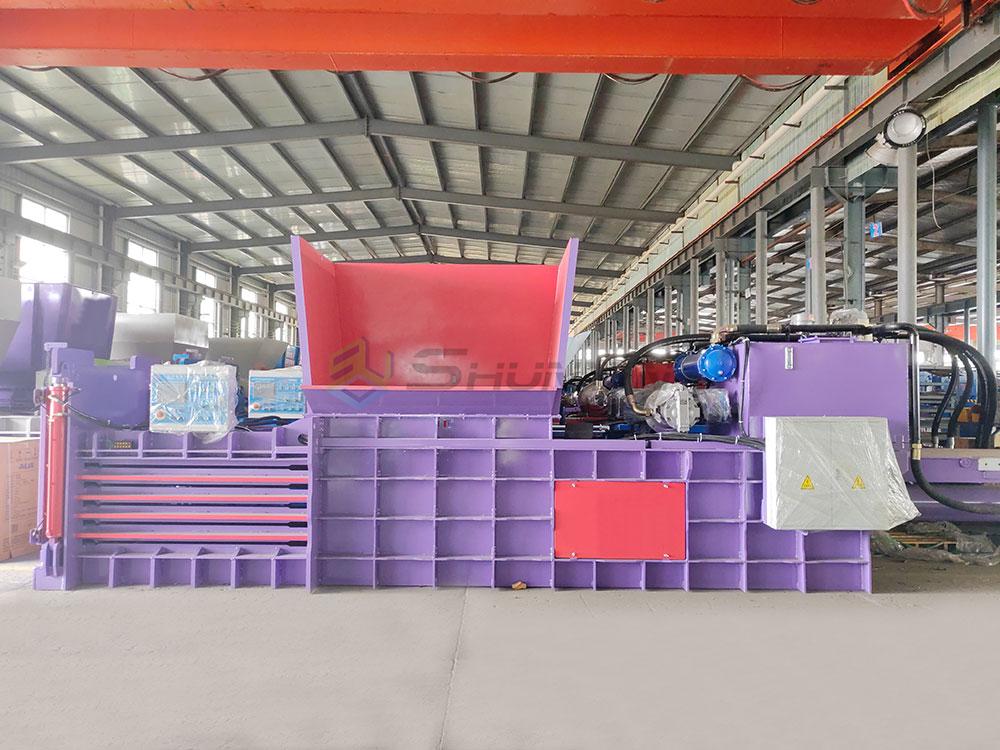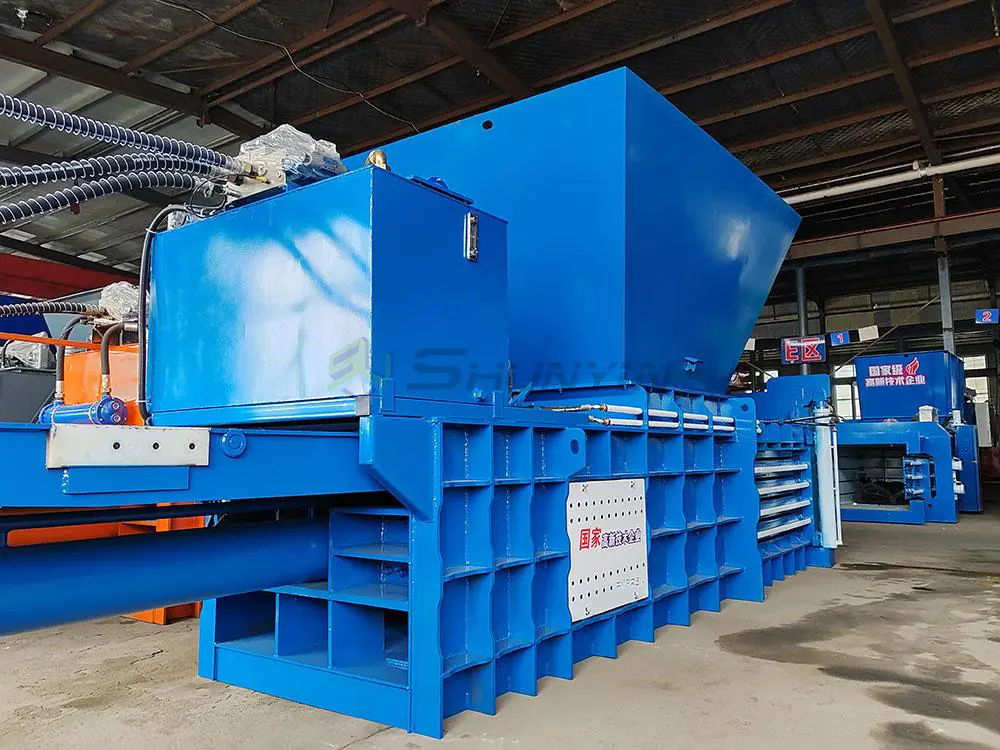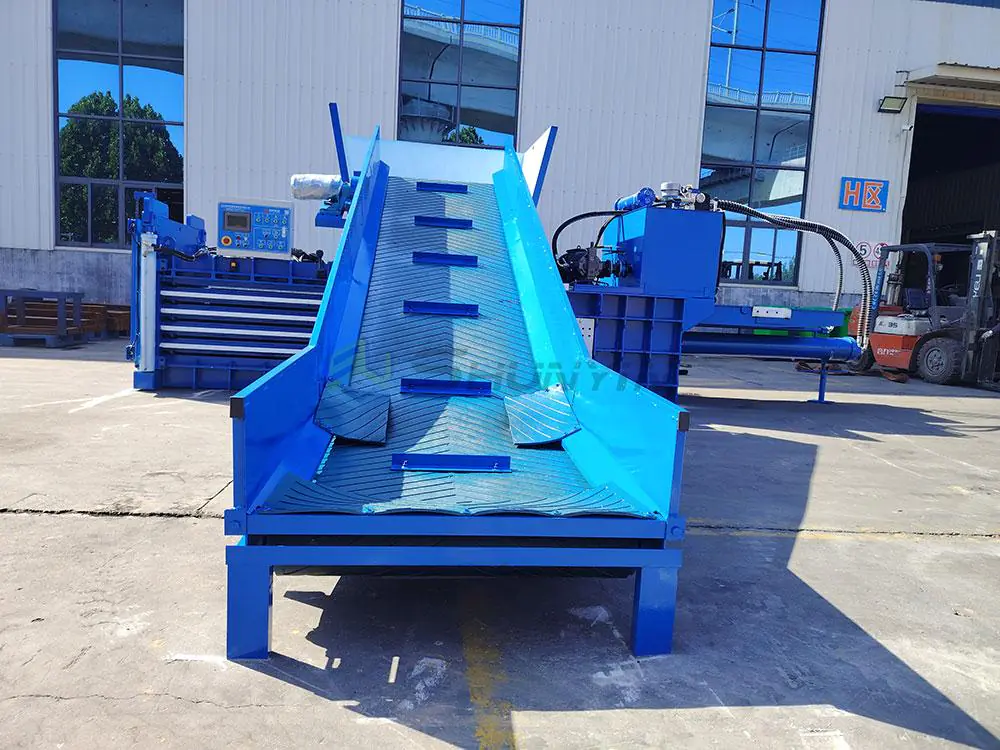Manual waste handling costs escalate as volume grows. Horizontal balers1 solve this permanently while creating profit opportunities.
Horizontal auto balers process bulk recyclables continuously using automated feeding systems and programmable hydraulic pressure to create standardized bales that cut labor by 75% while maximizing material density for premium resale values.

After implementing our SY-H300 model, a Chicago distributor reclaimed 60% warehouse space. Let’s examine their unique advantages.
What Makes Horizontal Baler Mechanics Superior?
Vertical models struggle with high-volume output. Horizontal configurations dominate throughput-intensive facilities.
Horizontal balers1 process material continuously via conveyors and side-feeding chambers where hydraulic rams compress waste lengthwise to form dense, uniform bales at 2x vertical machine speeds.

A Canadian client replaced 3 vertical units with one 50-ton horizontal—saving $40k yearly in maintenance. Examine their core innovations.
Evolution of Operation Cycles
- Automated Infusion Phase
Material enters via conveyor belts with optical sensors regulating inflow -
Pressure Sequencing
RAM cycles use progressive pressure profiles:Material PSI Range Compression Time Cardboard 1000-1800 20-45 seconds PET Bottles 2200-3500 25-60 seconds - Self-Ejection Systems
Finished bales slide onto rollers without manual lifting
Hydraulic Intelligence
Our models feature
- Flowrate sensors that adjust pressure during dense material patches
- Temperature safeguards halting operation at 75℃
Client tip: request live demonstrations to watch material handling techniques.
What Baler Machine Variations Serve Different Needs?
Buyers often choose the wrong type for their throughput capacity2. This causes bottlenecks or capital waste.
The three primary baler types—horizontal, vertical, and two-ram systems—vary significantly in output capacity, space requirements, and investment levels.

I once saved a Vietnamese manufacturer $60k by recommending verticals for satellite collection points. Compare features critically.
Field Deployment Matrix
| Type | Daily Capacity | Space Needed | Price Range | Best For |
|---|---|---|---|---|
| Vertical | 2-8 tons | 15m² | $10k-25k | Retail collection centers |
| Single-Ram H | 15-40 tons | 40m² | $40k-90k | Distribution hubs |
| Two-Ram H | 50-200 tons | 70m²+ | $120k-350k | Recycling mega-plants |
Customization Opportunities
- Add multi-material pre-sorters3 when handling mixed streams
- Install remote monitoring systems4 for overseas owners
Verify supplier certifications—some "horizontal" balers use vertical-style chambers. We provide 360° factory walkthroughs.
What Size Factors Impact Horizontal Baler Decisions?
Floor space errors create operational headaches. Proper dimensional analysis prevents expensive redesigns.
Industrial horizontal balers require 6-12m length × 3-5m width layouts plus 3m ceiling heights for feed systems, with exact dimensions varying based on chamber capacities.

A Japanese factory modified columns after underestimating clearance needs. Study these physical parameters.
Critical Dimension Standards
| Throughput-Based Chamber Sizes | Bale Weight | Chamber Dimensions (L×W×H) | Loading Clearance |
|---|---|---|---|
| 500kg | 2.2×1.2×1.1m | 2.5m | |
| 800kg | 2.8×1.5×1.3m | 3.2m | |
| 1200kg | 3.5×1.8×1.6m | 4.0m |
Infrastructure Requirements
- Electrical Load
50-ton models require 25kva transformers minimum - Floor Reinforcement
2000psi concrete slabs with vibration dampeners - Drainage Provisions
Hydraulic reservoir maintenance access
Certified models include CE/ISO structural reports5—we engineer site-specific installation templates before shipping.
Conclusion
Horizontal balers1 deliver unmatched automation efficiency when sized correctly—get expert layout analysis now.
Send your facility dimensions for custom baler recommendations
-
Explore this resource to understand how horizontal balers enhance efficiency and profitability in waste management. ↩ ↩ ↩
-
Learn about the critical factors that influence throughput capacity in baling operations. ↩
-
Understand how multi-material pre-sorters enhance efficiency in handling mixed recyclables. ↩
-
Explore the advantages of remote monitoring for optimizing baler performance. ↩
-
Discover the significance of CE/ISO structural reports in ensuring baler safety and compliance. ↩


